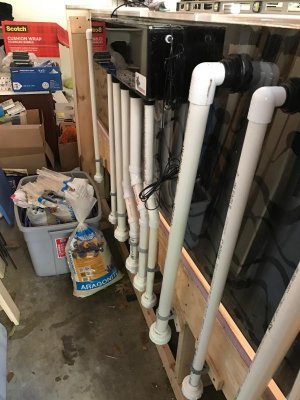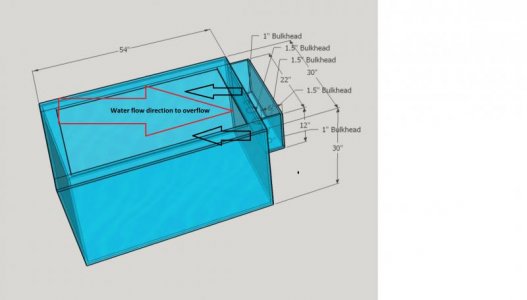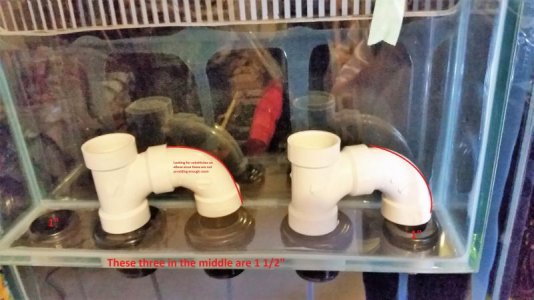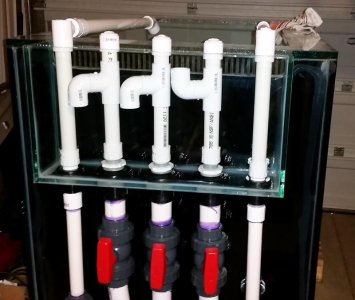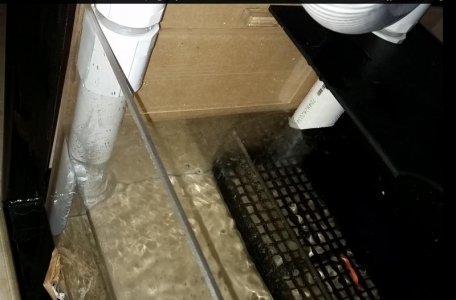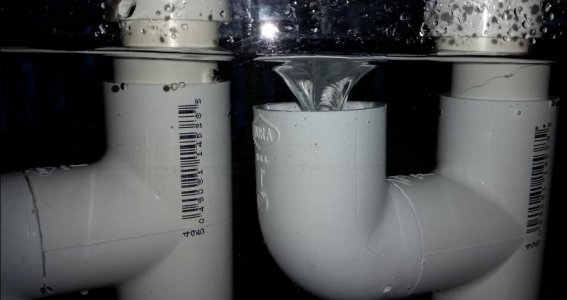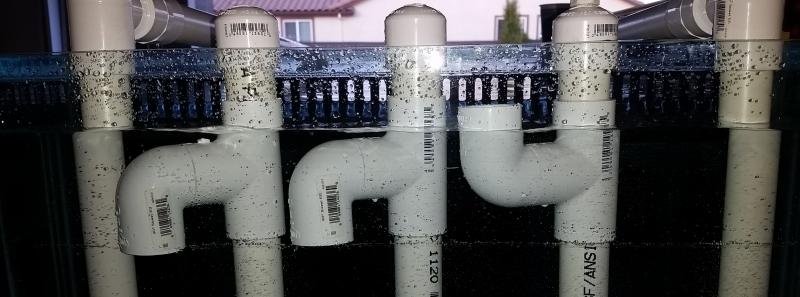Today I finished the plumbing in the overflow box and valves below.
*** SNIP ***
Finished plumbing, fixed a major bulkhead leak, and now into the revisit dumb questions, re-read thread, and fix what I have incorrect by error or assumption(s).
What is the proper way to adjust flow? I think I have a couple issues though so a couple questions.
1. First image is my sump. Should all of the return lines be submerged? Looking at the image the left return line is fully submerged. The one in the right is not. Not sure why they built it that way but maybe I can put a pipe in there and extend it if so. It is 1 1/2" PVC.
2. Second image and concern is the emergency overflow. I "know" it is supposed to handle the flow for a short time and be loud in doing so. This image is showing the vortex which I guess is correct? I ran it a couple other times to test and it is completely submerged under water and I didn't notice a vortex. That return is on the far right of the sump and not fully submerged either. Or is this the way it is supposed to be?
3. Final image is the fine tuning bit. Are both returns that are not the emergency (flipped upside down one) supposed to be flowing water? Also should I raise the height a bit more? It seems that there is room and it would lower the overflow noise a bit.
I'm finding that I'm closing the ball valves more than what I expected and I'm not sure how this is balanced. Is the water level in the overflow box low to the base of the elbow because it is draining faster than the return pump can return? Or maybe higher than the top of the elbow in the picture because I'm returning too much and not draining? Or is this back to the sump and not properly submerged?
I can see adjusting both return lines that are not emergency by closing is adjusting the water height and noise. I'm just not sure what is proper. I'm thinking of extending the two pipes by 1/4 to 1/2" so the top of the tee / elbow is parallel with the top of the upside down emergency. Maybe that is the right thing to do. Then find a way to extend the pipes in the sump a bit more that are not submerged.
Nice system. Issues are my ignorance

But it is fun I must say and learning something new. I was buying parts at the local parts store. Plumbing stuff I forgot or wanted to change. Fella walks up - hey, you wouldn't be a plumber by any chance would you? Me, lol - no sir. I am the last person you want to ask for help

We both laughed.
Edit: Just re-read Bean's original post / blog explaining it. I found something I did backwards so going to go test....will update in a bit.
UPDATE: Edit 2 & Final: Fixed a couple issues after re-reading original blog/instructions per edit above. Main issue was that I had the airline attached to the emergency drain. Since the end caps are not glued down I just moved it to the open channel and that did wonders. I also raised the full siphon and open channel pipes in the overflow by 1/2" which helped with some noise and splashing that was going on. Now after re-start from a off state it is silent. I mean the only thing I can hear is the DC pump. Very nice. I have a few plumbing mistakes I want to make neater but overall I'm pleased. I'll let it run over night and see how it looks in the morning. So far though the past hour it is running great!
Thanks Bean and everyone who contributed to the thread.

